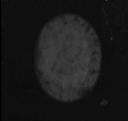
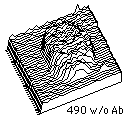

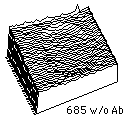
Autofluorescence, also known as adventitious fluorescence and background fluorescence, is a contributor to unwanted noise, which reduces the signal-to-noise ratio and hence can reduce sensitivity. This example shows the autofluorescence seen using 490 nm excitation versus that of the same specimen using 685nm (near-infrared) excitation, the excitation wavelength of the LaJolla Blue fluorophore.




The figures above show the autofluorescence of one Gray Snapper (Lutjanus griseus) oocyte excited at 490 nm, typical of fluorescein and 685nm of LaJolla Blue. The same non-labelled oocyte was used to obtain both images.
The accompanying surface plot shown to the right of the corresponding image graphically illustrates the autofluorescent signal or background noise using 490 nm and the lack of autofluorescence using the LaJolla Blue excitation wavelength (685 nm).
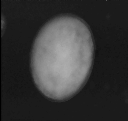
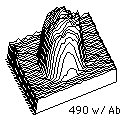

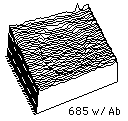
The figures above show the autofluorescence of a different Gray Snapper (L. griseus) oocyte excited at 490 nm and 685nm. Again the accompanying surface plot shown to the right of the corresponding image graphically illustrates the autofluorescent signal or background noise using 490 nm and the lack of autofluorescence using 685nm, the LaJolla Blue excitation wavelength.
As in Part 1, one oocyte was used to generate both images. In this example the oocyte was treated with the IgG fraction of a goat polyclonal antiserum produced to a purified L. griseus 66KDa glycoprotein. That Ab was not conjugated to any fluorescent label.
Microscope: Leitz Laborius S with a Xenon lamp, MITC CCD 74 cooler and a DSP-2000 processor.